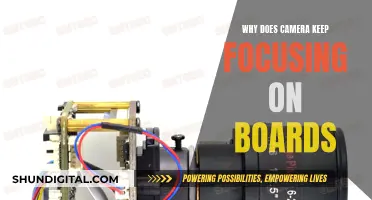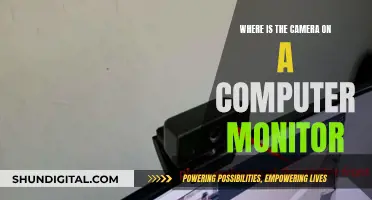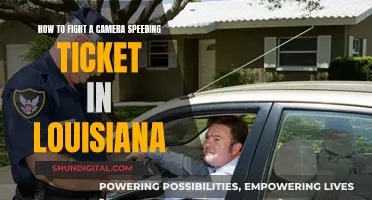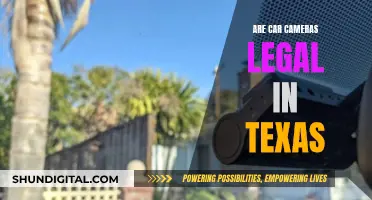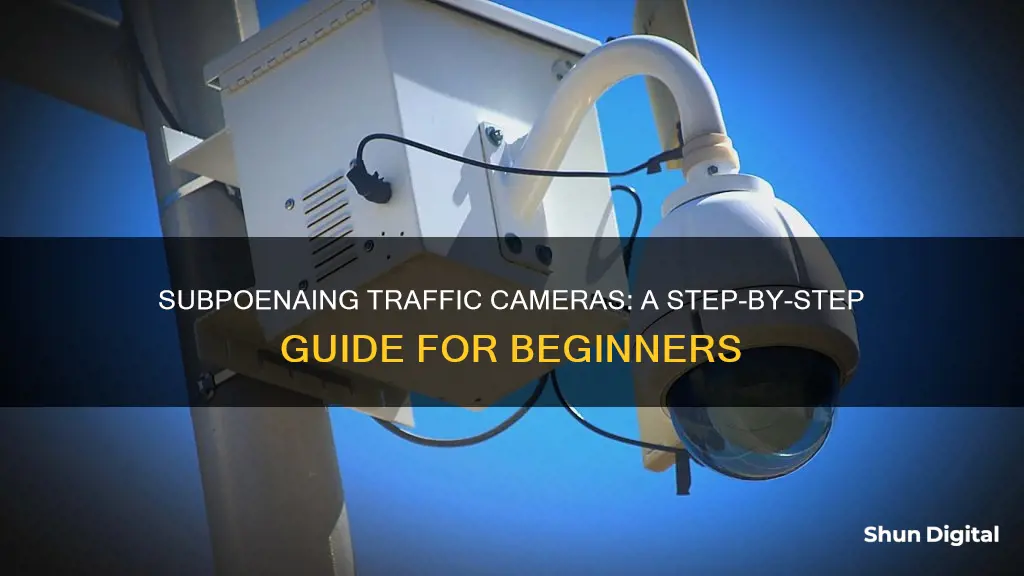
Traffic cameras can be a valuable source of evidence in the aftermath of a road accident, but obtaining footage from them can be a complex process. In some states, such as Georgia, traffic cameras are not recorded, which can be frustrating for those involved in an accident. However, there are alternative sources of footage, such as private surveillance cameras, home security cameras, and personal dash cameras. Obtaining footage from these sources may require the assistance of an attorney, who can send a spoliation letter to the owner of the footage requesting that it be preserved. In some cases, a subpoena may be required to release the footage, especially if it is held by a government agency. It is important to act quickly when seeking traffic camera footage, as footage may only be stored for a limited period before being deleted or overwritten.
| Characteristics | Values |
|---|---|
| Traffic camera footage sources | Actual traffic cameras, business surveillance cameras, dash cameras from police vehicles, other cameras like witness cellphones or home surveillance systems |
| How to obtain traffic camera footage | Depends on the type of footage and the state; some states allow footage to be viewed online with a ticket number and license plate number, while others require a Freedom of Information (FOIA) request or a subpoena |
| Time to obtain footage | Time-sensitive; footage may be deleted or overwritten after a certain period, typically between 10 and 30 days |
| Benefits of traffic camera footage | Provides irrefutable evidence to support a personal injury case and prove liability |
What You'll Learn
- Subpoena requirements vary depending on the type of footage and the state
- A Spoliation Letter is required to request that footage be preserved
- Footage from traffic cameras is often only stored for a short period
- A Freedom of Information (FOI) request may be required to obtain footage
- A personal injury lawyer can help you obtain the footage

Subpoena requirements vary depending on the type of footage and the state
The requirements for subpoenaing traffic camera footage vary depending on the type of footage and the state in which the footage was captured. In general, the first step is to identify the owner or operator of the camera. This could be a private individual, a business, or a government entity. For example, traffic cameras are typically owned by government agencies, while dash cameras are often owned by private individuals.
Once the owner has been identified, the next step is to send a preservation letter or spoliation letter. This letter requests that any relevant footage be preserved and not deleted, altered, or destroyed. The letter should include specific information such as the names and contact information of the parties involved, the date, time, and location of the incident, and a description of the type of footage being requested. It is important to act quickly when sending this letter, as footage may be deleted or overwritten if not preserved in a timely manner.
If the camera owner does not voluntarily provide the footage, a subpoena or court order may be necessary. A subpoena is a legal order compelling the owner to provide the footage, while a court order is a more formal order issued by a judge. To obtain a subpoena or court order, a motion must be filed with the court, demonstrating that the footage is relevant and necessary to the case. An experienced attorney can be invaluable in navigating this process and ensuring that all legal requirements are met.
It is worth noting that some states or municipalities may have specific procedures for requesting traffic camera footage. For example, in Chicago, alleged violations captured by traffic cameras are available for viewing for up to two years, and footage can be accessed online or by requesting it from the relevant city department. Additionally, some states, such as California, have specific laws regarding consent and the recording of private conversations. Therefore, it is important to be aware of the specific laws and requirements in the relevant state when seeking to subpoena traffic camera footage.
Traffic Camera Tickets: Louisiana's Legal Loophole Explored
You may want to see also

A Spoliation Letter is required to request that footage be preserved
A Spoliation Letter is a document sent by an injured party or their legal representative to the party they hold responsible for an accident. This letter notifies the recipient that they must preserve specific evidence pertinent to any pending litigation. The recipient of the letter must take steps to ensure that no evidence mentioned is lost or discarded.
The Spoliation Letter must identify the date, time, and location of the incident, and include a demand that any relevant footage be preserved in anticipation of litigation. The letter should be sent by certified mail to confirm receipt.
The purpose of the Spoliation Letter is twofold. Firstly, it ensures that the recipient does not lose, alter, tamper with, delete, or destroy any evidence that can help the sender's legal claim. Secondly, it serves as a warning that if the recipient fails to preserve the evidence, they may face punishment from the judge. This could include instructing the jury that the recipient lost or altered the evidence, resulting in an adverse inference, or even the dismissal of the action or default judgment.
When sending a Spoliation Letter, it is important to be as specific as possible about the evidence that needs to be preserved. This may include video footage, photographs, documents, personnel files, maintenance records, and any other relevant information. It is also crucial to send the letter as soon as possible after the incident, as some evidence may be routinely destroyed after a certain period of time.
In summary, a Spoliation Letter is a powerful tool to ensure that important evidence is preserved and can significantly strengthen a legal claim. By sending a detailed and timely Spoliation Letter, individuals can improve their chances of a successful outcome in their case.
Infrared Cameras: Why Your Next Computer Needs One
You may want to see also

Footage from traffic cameras is often only stored for a short period
The duration for which traffic camera footage is stored varies from one jurisdiction to another. In general, most jurisdictions keep the footage for a period of 30 to 90 days before it is deleted or overwritten. For example, in New York City, the Department of Transportation stores traffic camera footage for 30 days before deletion, while in Los Angeles, California, traffic camera footage is stored for up to five years.
The storage duration of traffic camera footage depends on the policies set by local authorities and the purpose for which it was recorded. If the footage was recorded as part of an ongoing investigation or legal proceeding, it may be kept indefinitely. However, if it was recorded for routine traffic monitoring, it may only be stored for a short period.
Some jurisdictions have specific laws governing how long certain types of surveillance footage can be retained. For instance, in California, red light camera footage must be kept for at least 30 days but can be retained longer for investigations or legal proceedings. In contrast, speed camera footage in New York City must be deleted after 60 days unless needed as evidence.
The type of storage technology used also affects how long traffic camera footage can be stored. Systems using hard drives or solid-state drives may require frequent deletion or overwriting of old data due to limited storage capacities. On the other hand, cloud-based storage solutions offer virtually unlimited storage capacity.
Given the varying retention policies and the potential for footage to be overwritten or deleted, it is essential to act quickly if you need to obtain traffic camera footage for legal purposes. Consulting with an attorney who can guide you through the process of requesting or subpoenaing the footage is often the best course of action.
Surveillance Cameras: How Many Families Feel Secure?
You may want to see also

A Freedom of Information (FOI) request may be required to obtain footage
A Freedom of Information (FOI) request may be required to obtain traffic camera footage, depending on the type of camera and the agency operating it. FOI requests are typically used to obtain footage from government agencies, such as the Department of Transportation (DOT) or the police.
To make an FOI request, it is recommended to first identify the specific camera and the agency responsible for it. This can be challenging as there are thousands of municipalities and government agencies across the United States that operate traffic cameras. Some cameras are owned by state, city, or county governments and operated by the DOT or police. Once the responsible agency has been identified, it is advisable to contact them directly, either in person or by sending a written request. Knowing which agency operates the camera can save a lot of time when making an FOI request.
It is also important to act quickly when requesting traffic camera footage, as there is no standard retention period for the footage. Some agencies may keep the video for as little as 14 days, so it is recommended to make the request within 10 days of the incident.
In some cases, a subpoena may be required to obtain traffic camera footage, especially if the footage is related to a car accident or legal proceeding. An experienced attorney can assist in determining the appropriate course of action and making the necessary requests.
Focusing on Dual Subjects with Your Camera
You may want to see also

A personal injury lawyer can help you obtain the footage
Traffic camera footage can be crucial in determining the cause of a car accident and holding the responsible parties accountable. However, obtaining this footage can be a complex and frustrating process. This is where a personal injury lawyer can step in and help.
Firstly, a lawyer can help you identify the location of the traffic camera that may have captured the crash. They can do this by reviewing the police report or by contacting the local police department or department of transportation. Once the location of the traffic camera has been identified, a lawyer can then determine the jurisdiction of the camera. This is an important step as it will determine who to contact to obtain the video footage.
After identifying the jurisdiction of the camera, a lawyer will know who to contact to request the video footage. This may involve contacting the local police department, department of transportation, or a private company. When requesting the video footage, a lawyer will be prepared to provide all the necessary details, including the date and time, location, and any other relevant information. They will also know to follow up on the request to ensure it is being processed.
In some cases, a release form may be required before the footage can be released. A lawyer will know how to handle this and any other potential obstacles that may arise. If there are any issues, a lawyer can also help you obtain footage through a court order or subpoena.
In addition to obtaining traffic camera footage, a personal injury lawyer can also help you gather other important evidence to support your claim. This may include witness statements, medical records, and surveillance footage from nearby businesses or residences. They can also help you understand your rights and obligations and advise you on how to use the video footage effectively to build a strong personal injury case.
It is important to act quickly when trying to obtain traffic camera footage, as many agencies only keep footage for a short period of time before it is deleted or overwritten. A personal injury lawyer will be able to move quickly to preserve this crucial evidence and strengthen your case.
Traffic Camera Tickets: Payment Deadline and Consequences
You may want to see also
Frequently asked questions
Traffic camera footage can be obtained from various sources, including traffic cameras, business surveillance cameras, dash cameras from police vehicles, and other cameras like witness cellphones or home surveillance systems. The process for requesting traffic camera footage varies depending on the type of footage and the location. In some cases, a subpoena or a Freedom of Information (FOIA) request may be required to obtain the footage.
There are several challenges in obtaining footage from a traffic camera. Different transportation authorities may have jurisdiction over the cameras, depending on the location of the accident. For example, if the accident occurred on a local road along a state highway, you would need to contact the state transportation department rather than the city government. Additionally, tollway and transportation authorities may have internal policies and procedures for releasing traffic camera footage, which may require a subpoena or a FOIA request.
The retention period for traffic camera footage varies. In some cases, footage may be available for a few days or weeks, while in other cases, it may be stored for up to two years. It is important to act quickly and contact the relevant authorities or businesses to request the preservation and release of the footage.


